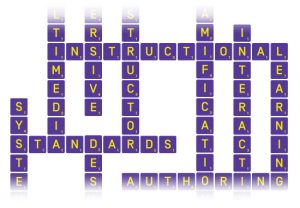The term scenario based training can be a difficult one to define when it comes to elearning, so we will have a go. It is certainly a phrase that people have different takes on, so be prepared for people to disagree a little on what it means in this context.

In essence, a Scenario is a framework for exercises, where the learning experience is hung around a realistic situation or story. It’s best explained by example, so here are some examples of typical titles for scenario based training exercises:
A customer calls you with a complaint
Whilst looking through the post you notice a suspicious package
The valve just fitted to the cold pipe is weeping water
Steve reacts badly to some of your constructive criticism
The scenario presents an exercise where the student is invited to imagine a situation. This is sometimes called immersive learning which may seem a little OTT – it can be good to imagine it as story based learning.
Clearly, the example titles above would need to come with a detailed narrative that gives plenty of detail for the student to work with. Some people call this a prologue.
An organic approach to learning
Instead of a linear model of training, where students are taken through ideas, concepts and facts topic by topic, increasing in difficulty and punctuated with examples, the scenario gives a more organic approach. There is a strong context to the material to increase student engagement – and it gets them thinking about workplace skills & practical application.
The scenario can be well suited to systems training when there is a clear job tasks for employees to do – for example:
A customer visits the branch and wants to make a foreign payment
In this case, an elearning exercise could involve going through the process step by step to achieve the result in the most efficient way – and dealing with the customer optimally.
The scenario can be more than just a ‘satisfaction of the optimal performance’, and can act as a vehicle for hanging key learning points for the student.
So a suite of scenario based learning would look to cover all the material of the ‘workbook’ approach by using a strong diversity of scenarios.
The scenario is a format which well supports a high level of interaction and thought for the student, and is particularly well suited to modern systems training.
It does not have to be like this however, and can support much looser situations where, for example, a student is asked to document and gauge reactions to a guided story.
Also, the scenario is a good vehicle for supporting branching.
For many elearning subjects, especially ones with work processes and systems or well defined tasks, the scenario paradigm can give you greatly enhanced engagement compared to a traditional approach. And in theory this greatly reduces the timings for training room or on the job training, which can be costly.
On the flip side, this sort of elearning needs more creative thinking to design and is harder – i.e. more expensive to build.
So in our opinion, and from our experience, if there is an obvious natural fit for scenarios they should be seriously considered for delivery. If you have to scratch your head and think what the scenarios might be, don’t bother.

















